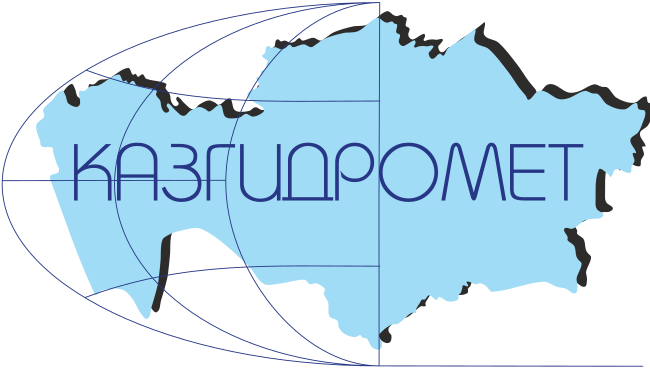DETERMINING THE SPECIES COMPOSITION OF FOREST VEGETATION IN THE KOSTANAY REGION USING REMOTE SENSING DATA
DOI:
https://doi.org/10.54668/2789-6323-2024-112-1-133-143Keywords:
forest vegetation, tree species, Kostanay Region, spectral channels, decoding, geographic information systemsAbstract
During the scientific investigation, woody species of forest vegetation were identified and a map of forest vegetation in the Kostanay region was produced using various data sources: field materials, Earth remote sensing data, and ArcGIS10.9 software. An algorithm was developed to detect tree species based on Landsat 9 satellite imagery, characterized by high spatial resolution. Recognition of dominant tree species was performed using various combinations of spectral bands from Landsat 9 imagery, analysis of vegetation indices (NDVI, EVI) across different seasons, and supervised local adaptive classification. The obtained data were validated against field research materials (August-September 2023) and forest management records. The chosen algorithm implements contemporary approaches to acquiring and processing necessary data from satellite remote sensing imagery. Further differentiation and creation of the forest vegetation map of the Kostanay region were based on the established map of tree species, digital elevation model, geological-geomorphological features, field research, thematic maps, and physical geography of the region. As a result of the conducted research, six classes of forest stands were delineated in the Kostanay region, including light-coniferous and deciduous tree species such as pine, birch, aspen, larch, shrubbery, and meadow vegetation. These research findings and the algorithm developed can be applied to other study areas and hold practical significance.
References
Thematic decoding and interpretation of satellite images of medium and high spatial resolution [Electronic resource]: textbook Shikhov A.N., Gerasimov A.P., Ponomarchuk A.I., Perminova E.S.; Perm State National Research University. – Perm, 2020. - 191 p
Lupyan E.A., Satellite service for monitoring the state of vegetation (Vega)/ E.A. Lupyan, I.Yu. Savin, S.A. Bartalev, V.A. Tolpin, I.V. Balashov, D.E. Plotnikov // Modern problems of remote sensing of the Earth from space. 2011. No. 1. pp. 190-198.
Bartalev S.A., Egorov V.A., Zharko V.O., Lupyan E.A., Plotnikov D.E., Khvostikov S.A., Shabanov N.V. Satellite mapping of the vegetation cover of Russia. - M.: IKI RAS, 2016. - 208 p.
Bartalev S. A. Development of methods for assessing the state and dynamics of forests based on satellite observations: dis., Dr. tech. 01.04.01/ S. A. Bartalev. — M 2007. -291 p.
Marchukov V.S., Decoding of vegetation cover using spectral-temporal features/ V.S. Marchukov, E.A. Stytsenko // Exploring the Earth from space. 2012, No. 1, pp. 77-88.
Zharko V.O., S.A. Bartalev Assessment of the recognizability of woody forest species based on satellite data on seasonal changes in their spectral-reflective characteristics // Modern problems of remote sensing of the Earth from space. 2014. Vol. 11. No. 3., pp. 159-170.
Zhirin V. M., Dynamics of spectral brightness of the breed-age structure of groups of forest types on Landsat satellite images/ V. M. Zhirin, S. V. Knyazeva, S. P. Eidlina // Forest science. 2014. No.5. pp. 3-12.
Isaev A. S., Satellite sensing ― a unique tool for monitoring forests in Russia/ A. S. Isaev, S. A. Bartalev, E. A. Lupyan, N. V. Lukina// Bulletin of the Russian Academy of Sciences. 2014. Vol. 84. No. 12. pp. 1073-1079.
Rouse J.W., Haas R.H., Schell J.A., Deering D.W. Monitoring vegetation systems in the Great Plains with ERTS // Third ERTS Symposium, NASA SP-351 I, 1973, P. 309-317.
Czaplewski R. Variance approximations for assessments of classification accuracy // Fort Collins: US Department of Agriculture, Forest Service. Research paper RM–316. – 1994. – 30 p.
Epting, J.; Verbyla, D. Landscape-level interactions of prefire vegetation, burn severity, and postfire vegetation over 16 years in interior Alaska. Can. J. For. Res. 2005, 35, 1367–1377.
https://www.gov.kz/memleket/entities/kostanay/documents/details/206893?lang=ru
Pugachev P.G. Pine forests of the Turgai depression. – Kostanay, 1994. – 406 p.
L.N. Gribanov Steppe forests of the Altai Territory and Kazakhstan. – Moscow, Goslesbumizdat, 1960. - 212 p.
Vilesov E.N., Naumenko A.A., Veselova L.K., Nurbekov B.J. Physical geography of Kazakhstan. – Almaty: Kazak University, 2009. – 362 p.
Munzer Nur. Development of a methodology for using satellite imagery data for forest monitoring: dissertation ... Candidate of Technical Sciences: 25.00.34 / Munzer Nur; [Place of protection: Moscow State University of Geodesy and Cartography]. - Moscow, 2021. - 150 p.
National Atlas of the Republic of Kazakhstan / edited by A.R. Medeu et al. – Almaty, 2010. – vol. 1. – 149 p.





